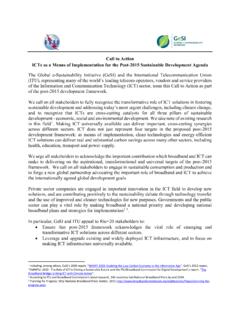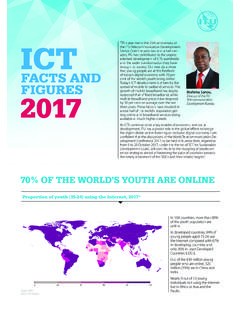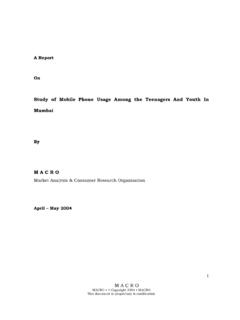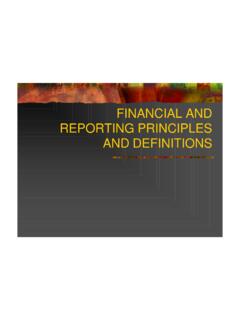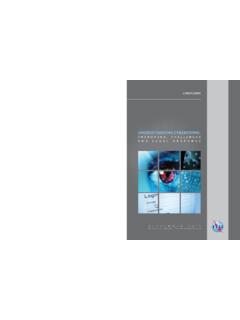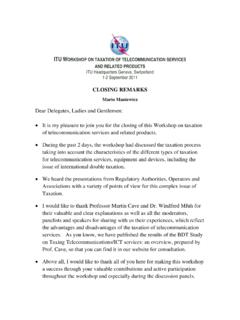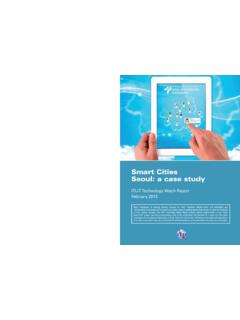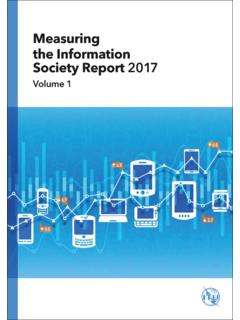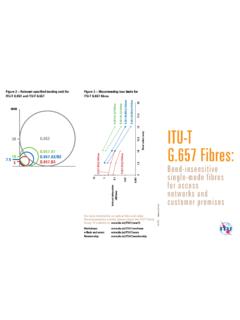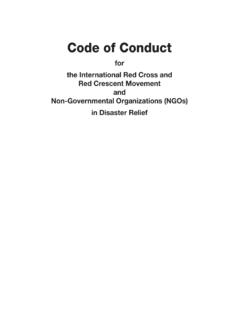Transcription of Handbook – Optical fibres, cables and systems
1 I n t e r n a t i o n a l T e l e c o m m u n i c a t i o n U n i o n 2009. ITU-T Manual Optical fibres, cables Optical fibres, cables and systems and systems International Telecommunication Union Place des Nations CH-1211 Geneva 20. Switzerland Printed in Switzerland ITU-T Manual Geneva, 2009. Photo credits: ITU, Photodisc 2009. Optical fibre, cables and systems Foreword Malcolm Johnson Director ITU Telecommunication Standardization Sector As we approach the half century mark for the dawn of the era of Optical communications, it is appropriate to take stock of the journey of discovery and application of this empowering technology. As with most new technologies, the engineering challenges associated with its assimilation into the existing infrastructure have been as significant as the scientific advances within the invention of the laser itself.
2 ITU-T has been active in the standardization of Optical communications technology and the techniques for its optimal application within networks from the infancy of this industry. However, it is not always easy to find out what has been covered, and where it can be found. This manual attempts to aggregate all of the available information on ITU-T's work. The manual is intended as a guide for technologists, middle-level management, as well as regulators, to assist in the practical installation of Optical fibre-based systems . Throughout the discussions on the practical issues associated with the application of this technology, the explanations focus on how ITU-T Recommendations address them. It provides the organized insights of those who have created and lived with the evolution of the technology for several decades.
3 The first ITU-T Handbook related to Optical fibres, Optical Fibres for Telecommunications, was published in 1984, and several others have been produced over the years. It is an honour to present you with the latest version, which is another example of how ITU-T is bridging the standardization gap between developed and developing nations. I trust that this manual will be a useful guide for those looking to take advantage of Optical cables and systems and I welcome feedback from readers for future editions. The success of efforts such as this, and the underlying standardization upon which it is based, depends on attracting and involving the pioneers of new technologies in a spirit of collaborative competition to establish the best practices for the common good. Participation is open to all.
4 I would like to express my appreciation to the experts from the ITU membership, who have provided us with valuable proposals and to those who have contributed to the new version. My particular appreciation goes to Mr. Gastone Bonaventura, former Vice-Chairman of ITU-T Study Group 15, the leading Study Group on Optical Networks, and his team of collaborators. Malcolm Johnson Director ITU Telecommunication Standardization Sector -i- Optical fibre, cables and systems Acknowledgements This manual was prepared under the leadership of Mr. Yoichi Maeda, Chairman of ITU-T Study Group 15, and of Mr. Francesco Montalti, Chairman of ITU-T Working Party 2/15. It is based on the contribution of numerous authors who either contributed to the generation of the relevant ITU-T Recommendations or participated in the ITU-T Study Group meetings.
5 In particular, credits for organizing the vast collection of material and for preparing the entire draft text of this manual should be given to Gastone Bonaventura (Chief Editor) and for the revision of the text to his collaborators (Editors): Tom Hanson (Chapter 1), Shigeru Tomita and Kazuyuki Shiraki (Chapter 2), Edoardo Cottino (Chapter 3 and 4), Bernd Teichmann (Chapter 5), Sergio Cascelli and Peter Stassar (Chapter 6), Pete Anslow (Chapter 7), Makoto Murakami and Kazuyuki Shiraki (Chapter 8), Paolo Solina (Chapter 9), Noriyuki Araki (Chapter 10); and to many other ITU-T. delegates and the ITU-TSB staff who have contributed with their comments to finalize the text. ITU 2010. All rights reserved. No part of this publication may be reproduced, by any means whatsoever, without the prior written permission of ITU.
6 - ii - Optical fibre, cables and systems PREFACE. The invention of the laser and its demonstration is dated 1960. It was suggested in 1966 that Optical fibres might be the best choice for using laser light for Optical communications, as they are capable of guiding the light in a manner similar to the guiding of electrons in copper wires. The main problem was the high losses of Optical fibres: fibres available during the 1960s had losses in excess of 1 000 dB/km. A breakthrough occurred in 1970 when the losses could be reduced to below 20 dB/km in the wavelength region near 1 000 nm. At about the same time, GaAs semiconductor lasers, operating continuously at room temperature, were demonstrated. The simultaneous availability of compact sources and of low-loss Optical fibres led to a worldwide effort for developing Optical fibre communication systems .
7 The real research phase of fibre-optic communication systems started around 1975. The enormous progress realized over the 30-year period extending from 1975 can be grouped in several distinct phases. Over this time period the BL product [B is the bit rate and L is the repeater spacing, where the repeaters perform Optical to electrical to Optical conversion] doubled every year. In every phase BL increased initially but began to saturate as the technology matured. Each new phase brought a fundamental change. The first phase The first phase of lightwave systems operated near 850 nm and used GaAs semiconductor lasers with multimode fibres. After several field trials during the period 1977-79, such systems became available commercially in 1980. They operated at a bit rate of 34-45 Mbit/s and allowed repeater spacings of up to 10 km.
8 The larger repeater spacing compared with 1-km spacing of coaxial systems was an important motivation for system designers because it decreased the installation and maintenance costs associated with each repeater. This phase of lightwave systems was specified in two Recommendations. The first one is ITU-T , where the characteristics of a multimode Optical fibre operating at 850 nm are specified. The second one is ITU-T (now ITU-T ) where are specified the characteristics of the Optical systems operating at 850 nm and suitable for the bit rates of the plesiochronous digital hierarchy (PDH). The second phase It was clear during the 1970s that the repeater spacing could be increased considerably by operating the lightwave systems in the wavelength region near 1 300 nm, where fibre loss is below 1 dB/km.
9 Furthermore, Optical fibres exhibit minimum dispersion in this wavelength region. This realization led to a worldwide effort for the development of InGaAsP semiconductor lasers and detectors operating near 1 300 nm. The second phase of fibre-optic communication systems , based on InGaAsP semiconductor lasers and detectors operating near 1 300 nm became available in the early 1980s, but the bit rate of early systems was limited to below 100 Mbit/s because of dispersion in multimode fibres. This limitation was overcome by the use of single-mode fibres. A laboratory experiment in 1981 demonstrated transmission of 2 Gbit/s over 44 km of single-mode fibre. The introduction of commercial systems followed. By 1988, second-generation lightwave systems , operating at bit rates of up to Gbit/s with a repeater spacing of about 50 km, were commercially available.
10 This second phase of lightwave systems was also specified in some Recommendations. In particular, Recommendation ITU-T specifies the characteristics of a single-mode Optical fibre operating at 1 300 nm. Recommendation ITU-T G. 957 specifies the characteristics of Optical systems operating at 1 300 nm and suitable for transmitting the bit rates of the synchronous digital hierarchy (SDH) up to STM-16. Moreover the text of Recommendation ITU-T (now Recommendation ITU-T ) was extended to include also PDH systems operating at 1 300 nm. - iii - Optical fibre, cables and systems The third phase The repeater spacing of the second phase lightwave systems was limited by the fibre losses at the operating wavelength of 1 300 nm (typically dB/km). Losses of silica fibres become minimum near 1 550 nm.
